PURPOSE This study both validated the Characteristics of Resilience in Sports Teams Inventory (CREST) scale for use in Korean sports and analyzed the impact of team resilience on teamwork and performance. METHODS The study surveyed 462 elite football players by using the CREST scale to measure team resilience in Korean sports. Data were analyzed using descriptive statistics, exploratory factor analysis (EFA), reliability analysis, correlation analysis, multiple regression analysis, and confirmatory factor analysis (CFA). RESULTS First, results confirmed that the CREST scale’s two main factors—resilient characteristics and vulnerabilities under pressure—can be meaningfully applied in the Korean context. Second, resilient characteristics showed positive correlation with life skills, whereas vulnerabilities under pressure showed negative correlation. Third, resilient characteristics positively predicted life skills, whereas vulnerabilities under pressure negatively affected life skills. CONCLUSIONS The CREST scale was found reliable and valid in the Korean sports context, demonstrating that team resilience significantly impacts life skills. Thus, the study contributes to evaluation of resilience in Korean sports teams and provides strategicinsights to improve team performance.
PURPOSE By analyzing trends in Taekwondo demonstrations, specifically in breaking and performances, to date, this study aims to offer timely insights and set the groundwork for future research. METHODS We used Korean abstracts from a total of 425 papers containing the keyword “Taekwondo demonstrations” spanning 20 years from April 2004 to April 2023. We employed Python 3.5.2 to conduct dynamic topic modeling (Latent Dirichlet Analysis, LDA) and to examine the correlation between the topic distribution by section and the publication year. RESULTS The main findings from the LDA are as follows. Topic 1 (10%): “The development of demonstrations: performance in culture and art, ” Topic 2 (11%): “The development of formalized rules and judgments in a demonstration event,” Topic 3 (08%): “A study on the educational courses and professionalism of Taekwondo coaches,” Topic 4 (11%): “Technical movements and kinematic characteristics,” Topic 5 (09%): “A study on marketing perspectives of demonstration performances,” and Topic 7 (33%): “Global exchange: the development and rise of internationalization.” In the correlation analysis between the topic share by section and the publication year, Topics 1 to 5 exhibited no statistically significant correlation. However, Topic 6, “A study on the attainment of events, training, and the psychological factors influencing athletes” and Topic 7, “Global exchange: the development and rise of internationalization,” also displayed a very statistically significant but negative correlation. CONCLUSIONS Future research should focus on studies on the psychological management of athletes during the performance of specific techniques and training methods. Further research considering the global characteristics of Taekwondo may be required.
PURPOSE This study aimed to verify the criterion validity of the two-minute step test in older Korean adults, develop an equation for predicting VO2max, and verify cross-validation. METHODS A submaximal exercise test and the two-minute walk test were performed on 150 older adults (74 males and 74 females) aged 65 years or older. Correlation analysis was performed to confirm criterion validity. An equation for estimating VO2max was developed through multiple regression analysis, and cross-validation was confirmed by performing a correlation analysis between measured and predicted values of VO2max. RESULTS The correlation coefficient between VO2max and the two-minute step test was 0.457 (p<.001). The adjusted R2 of the developed VO2max prediction equation was 0.430 (p<.001), and the explanatory variables finally selected were sex, age, number of steps in the two-minute step test, and percentage of body fat. The correlation coefficient between the measured VO2max (19.08±4.36) and the predicted VO2max (19.73±3.36) was 0.654 (p<.001). CONCLUSIONS This study confirmed the criterion validity of the two-minute step test in older Korean adults, and the cross-validation of the developed VO2max prediction formula was verified. The explanatory variables of the prediction equation will be easy to apply in the field, and more meaningful results will be derived if the validity of the prediction equation developed for a larger number of participants is verified.
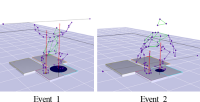
Purpose The purpose of this study was to identify the lower extremity muscles length change according to the increase of the weight during snatch. Also, through the muscle contraction velocity analysis, it is necessary to identify muscles that require rapid muscle contraction. Methods The subjects were 10 national weight-lifters. Their mean age was 29 ± 3.84 yrs, body weight 71.3 ± 16.04 kg, height 1.63 ± 0.07 m, and the highest recorded height 128 ± 36.30 kg. Experiments were performed during the snatch to 70%, 80%, and 90% of the individual highest records. The analysis variables were the lower extremity angle, angular velocity, muscle length and muscle contraction velocity and were calculated by biomechanical modeling. Statistical analysis was performed with a repeated measure with one-way ANOVA to analyze the difference between the increase weight (70%, 80%, 90% of peak) and the dependent variable (angel, angular velocity, muscle length and muscle contraction velocity). Results According to the results of the study, there was no statistical difference in angle, angular velocity and muscle length with increasing weight. However, in the comparison of the muscle length, muscle length of the vastus medialis, vastus lateralis, biceps femoris, rectus femoris were statistically higher than other muscles. Also muscle contraction velocity of the rectus femoris, biceps femoris, vastus medialis, vastus lateralis, rectus femoris were statistically higher than other muscles. Conclusion In the snatch, the dominant muscles were the muscles around the femur, and the co-contraction of biceps femoris and great adductor muscles would contribute to improve the performance.

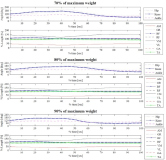
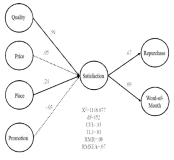
The purpose of this study was to examine the effect of marketing mix on satisfaction, repurchase intention, and word-of-mouth intention. Through the convenience sampling method, a total of 350 spectators from 2013 Son Yeon-Jae Gala Show. Of 350 surveys that were collected, 20 were discarded resulting in 330 usable surveys. By employing independent t-test, confirmatory facor analysis, structural equation modeling through SPSS 20.0 and AMOS 20.0, this study found followings. First, there was difference according to past experience of attending the gala show or watching it on media. Second, quality of performance and place in marketing mix were positively related to satisfaction. Third, satisfaction had a positive influence on repurchase intention and word-of-mouth intention. Fourth, quality of performance and place in marketing mix had a positive influence on repurchase intention and word-of-mouth intention mediated by satisfaction.

PURPOSE This study investigates the effectiveness of biomechanics information on intermediate golfers driver swing learning. It analyzes changes in center of pressure (COP) patterns, GRF Direction Inclination, driver performance, and learners psychological responses to determine the learning effects. METHODS Subjects were 32 right-handed male golfers (handicap 15-23) who had no difficulty in performing the golf driver swing (Full swing). Four groups were selected, BF (Biomechanics Feedback group), BVC (Biomechanics Verbal Cue group), CB (Combination group), and CT (Control group), and assigned randomly. Driver swing learning showed results after 6 weeks,and a transfer test was conducted 1 week after the completion of the learning. RESULTS Analysis of COP patterns and GRF Direction Inclination indicated changes in the BF, BVC, and CB groups. Furthermore, analysis of driver distance (m), club head speed (km/h), and ball spin rate (rpm) revealed that during the 6-week acquisition phase, all three groups (excluding the control group) showed improvements in driver distance, club head speed, and ball spin rate. However, there were no statistically significant differences among the groups. In contrast, the transfer test showed statistically significant differences among the groups, with the CB group exhibiting the highest driver distance. Learners' psychological responses during the learning process were trust, understanding, and satisfaction. The understanding factor was relatively higher in the CB and BVC groups compared to the BF group. CONCLUSIONS In summary, biomechanics information (BI) was effective in improving driver performance, and changesappeared in the COP pattern and GRF Direction Inclination, indicating a change in movement. Therefore, BI can be fully utilized for athletes or high-level advanced players and for motor learning for intermediate-level students.However, BI can only improve learning effects by strengthening learners' “understanding” when visual feedback forms and verbal cues are provided together.

The purpose of this study was to evaluate sports commentators’ public confidence by the difference between media recipients’ expected level on the public confidence and their perceived outcomes, and to investigate how such characteristics are perceived by media recipients. The questionnaires were given out to people in Seoul and Gyeonggi province, who have experience of having watched the 2014 FIFA World Cup Brazil. The samples were collected by snowball sampling method and a total of 218 questionnaires were chosen as final validity sample. For data analysis, frequency analysis, exploratory factor analysis, paired t-test, importance-performance analysis (IPA), PROXSCAL analysis, and a multiple regression analysis were done by using PASW 21.0. The derived results are as follows: First, according to results from IPA analysis, the Quadrant I is a status-quo area, which is inclusive of the professionalism of KBS and SBS commentators. The Quadrant Ⅱ is a concentrated effort-oriented area, which includes dynamics of KBS and SBS commentators, and professionalism and dynamics of MBS commentators. The Quadrant Ⅲ is an inferiority ranking area, which contains popularity of KBS and SBS commentators, and reliability of MBC commentators. The Quadrant Ⅳ is a rejection of overexertion area, which incorporates reliability of KBS and SBS commentators and popularity of MBC commentators. Second, according to results from MDS analysis in terms of the characteristics of public confidence, an order of KBS>SBS>MBC appeared in the fields of professionalism, reliability and dynamics, and an order of KBS>MBC>SBS appeared in popularity.


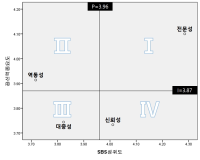
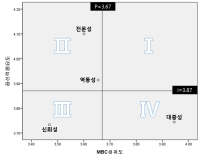
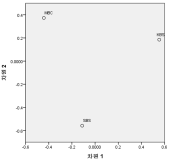
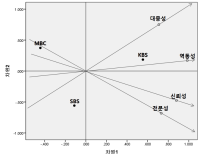
PURPOSE This study aimed to investigate the effects of trunk stabilization exercise (TSE) with abdominal expansion maneuver (AEM) that lasted for 8 weeks on postural stability and functional movement in college athletes. METHODS Twenty college athletes participated in the program (AEM=9, Control=11) and were subjected to 8-week TSE. The AEM group performed exercise by applying AEM techniques during TSE, and control group performed TSE without breathing-related instructions. Both groups measured postural stability with lower-quarter Y-balance test (LQYBT) and functional movement with functional movement screen (FMS) before and after applying TSE to verify the interaction before and after this study with the two groups. Two-way repeated analysis of variance was performed to evaluate the differences between groups and time for an absolute value of LQYBT and FMS, followed by Bonferroni’s multiple comparison tests for post-hoc analysis. RESULTS As a result of the left and right LQYBT, there was a significant difference between the time x group (p=.041, p=.033), and post-hoc analysis indicated that there was a significant difference between the AEM and control groups (p=.000, p=,000). Furthermore, the FMS total score indicated that there was a significant difference between the time × group (p=.039), and the post-hoc analysis showed the AEM group had significant results (p=.001), while there were no significant results in the control group (p=.255). CONCLUSIONS Application of AEM during TSE seems to be effective with regard to postural stability and functional movement in college athletes.

Purpose In general, motor imagery and action observation have been distinguished from each other. Recently, several studies demonstrated that combined approach to motor imagery and action observation can be more effective in motor learning. The present study examined the effects of observation learning combined motor imagery and action observation during acquisition basketball shooting skills. Methods We divided with control group, action observation group and observation learning group combined mental image and action observation in the three middle school. Action observation group provided the action observation program, and observation learning group was performed observation learning combined mental image and action observation training. All groups were perform basic basketball skills. Experimental intervention was performed for 10 weeks, and data analysis was performed 3 groups × 2 time repeated ANOVA. Results The results indicated that all group were improve after intervention, and subjects who participated in combined mental image and action observation was significant in the interaction effect on the front shoot. Moreover, the interaction effect on the motor imagery ability was significant. Conclusions These findings suggest that the use of observation learning combined mental image and action observation strategy potentially optimizes motor skills performance and motor image ability by incorporating motor imagery, especially when observing movements with intent to imitate.

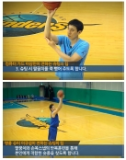

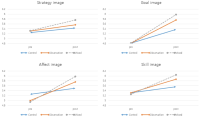
PURPOSE This study aimed to develop and implement a customized mental plan program to facilitate an optimal psychological state and peak performance among para shooting athletes. It also sought to empirically verify this program’s psychological effects by focusing on improvements in concentration, confidence, and relaxation. METHODS A total of six para shooting athletes who had earned medals in the Paralympic Games underwent six program sessions that were designed and implemented based on attention-related psychological factors identified through open-ended surveys and in-depth interviews. RESULTS The athletes’ attention was facilitated by task-focused behavior, breathing control, performance routines, and physical condition management. Meanwhile, their concentration was hindered by task-irrelevant thoughts, negative physical states, and external distractions. These factors were further categorized according to competition phase: the day before, precompetition, and during competition. Based on the statistical analysis, significant improvements were observed in the athletes’ concentration, confidence, and relaxation. CONCLUSIONS The custom program was practically effective as an intervention for psychological skills tailored to experienced para shooting athletes’ individual needs. The findings offer valuable insights for developing strategies supporting the psychological states of athletes in disabled sports.